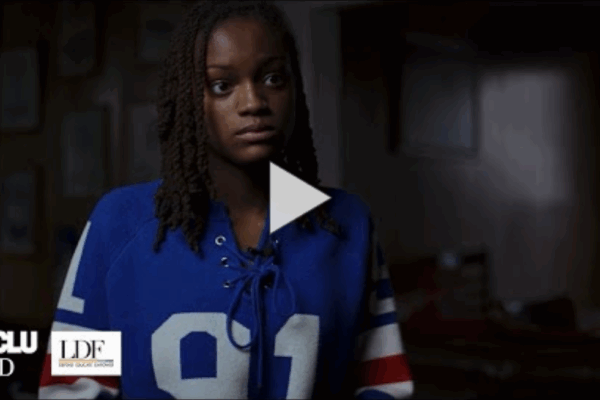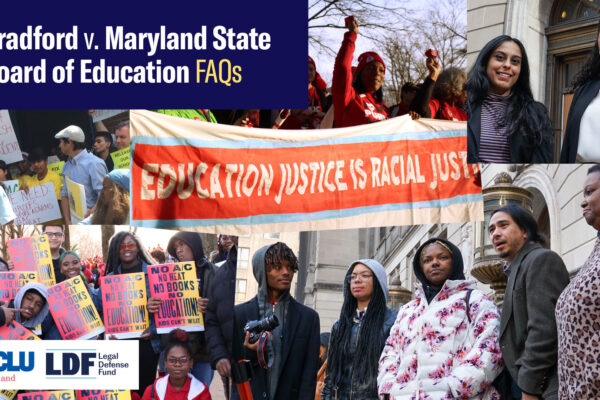Deshawna Bryant, a senior at Baltimore City High School, dreams of becoming a child psychologist. The youngest in her family, all her life Deshawna’s parents opened their home and hearts to many foster children, too. After high school, she plans on going to a university in Florida, and a big reason why is that it’s warm there all year round.
Deshawna was born with Sickle Cell S-C disease, which causes some of her red blood cells to become misshapen or break down. What comes with these red blood cells not being produced properly is called “pain crises”. These crises trigger pain in various body parts, and often begin suddenly and normally last several hours or at most five days. In Deshawna’s case, cold temperatures bring about “pain crises” in her leg.
Last year, because of the lack of heating at her high school, Deshawna had her longest and worst pain crisis ever, for more than a week. The pain became so severe that she needed physical therapy and a walker.
Heating in schools is not a luxury. It’s a necessity for the safety and wellbeing of students. Inadequate heat signals that schools are not receiving enough funding to support a healthy learning environment.
“I don’t believe that the conditions at school are the fault of any faculty or staff. In fact, they try their hardest to make the environment as comfortable as they can,” said Deshawna. City College High School offers rigorous college prep courses and is known for passionate staff members, who Deshawna says often stay late for one to two hours, helping students study for exams.
“Support within Baltimore schools is there, but what’s missing is the funding,” said Deshawna. State funding in Baltimore City public schools has been inadequate for decades. This has created a generational lack of resources that is deeply inequitable.
Many parents in Baltimore City have concerns about the conditions of the schools their children attend – for good reasons. City College High School, is, like many in Baltimore, one of the oldest school buildings in the state, and also has long-standing problems with toxic lead in the water. That means students must find the water coolers scattered around the school when they are thirsty, and hope that they aren’t yet empty for the day. Deshawna has to carry a water bottle with her during school, because another of her pain crisis triggers is dehydration.
There are other serious school facilities challenges in Baltimore, too, which cause unnecessary distractions while students are trying to learn. Many schools have classes with up to 30 students in them, and do not have enough teachers to address the concerns and educational needs of each unique child. After-school programs, such as those focused on writing and math, are also underfunded, even though they are necessary to promote students’ academic excellence. It is not uncommon for old roofs and plumbing pipes to suddenly leak, and deficiencies like the lack of modern technology and science labs create impediments for student learning. And, as has been widely publicized, lack of heating and cooling systems often cause schools in Baltimore to open late, close early, or even close for days at a time.
Under the Maryland Constitution, the State is required to provide a “thorough and efficient” education to all of Maryland’s public school students. The decades-long underfunding of childrens’ education in Baltimore City takes a real educational, physical, and psychological toll on students like Deshawna: “I know that not everyone in the state is dealing with the same thing. It feels bad because other counties have better schools.”
The investment that State leaders make in the education of children in Baltimore City, who are mostly Black and Brown and from families living in poverty, really matters. Disinvestment from the state shows a lack of care, as well as disregard for their constitutional rights.
“Students in Baltimore also have dreams,” said Deshawna. “And just because some of us aren’t rich enough to have those dreams come true doesn’t mean they should be taken away from us.”
Learn more about Bradford v. Maryland State Board of Education, a lawsuit brought under the Maryland Constitution by parents of children in Baltimore City Public Schools.


